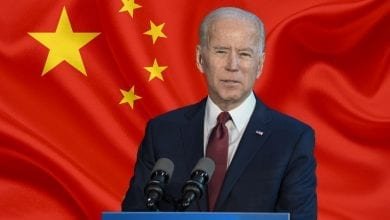Love Lost or Love Cost? Why Kirk Herbstreit Is Wrong About Why College Players Are Opting Out of Bowl Games
“I think this era of player just doesn’t love football.”
This was ESPN analyst Kirk Herbstreit’s explanation for why players are opting out of bowl games. In fact, Herbstreit doesn’t believe expanding the playoffs will solve this issue. “I don’t know if changing it, expanding it is going to change anything, I really don’t” Herbstreit said on College GameDay show on Saturday.
Herbstreit’s comments drew a large amount of criticism, with many others in the sports commentary industry arguing players still love football, but they fear injury. It’s the fear of career-ending injuries which is driving the decision to opt out of bowl games goes the counterargument.
In response to abundant criticism, Herbstreit walked back his statement a little, but didn’t really change the substance of his claim. He highlighted in a Tweet that “of course some players love the game the same today as ever.” However he immediately followed up this remark with, “but some don’t.”
Just wanted to clarify some of my comments from earlier today. Of course some players love the game the same today as ever. But some don’t. I’ll always love the players of this game and sorry if people thought I generalized or lumped them all into one category. pic.twitter.com/PS9Pu5rcoo
— Kirk Herbstreit (@KirkHerbstreit) January 1, 2022
Personally, I agree with the general idea of critics that Herbstreit’s explanation for why players are opting out of bowl games is weak. However, it’s important to highlight that critics of Herbstreit don’t have the full picture either.
It’s true that players can have career-ending injuries in Bowl games, but that isn’t new. Injuries by themselves can’t explain why players are increasingly opting out of playing bowl games because injuries were always a factor for players to consider.
Then what is at the bottom of players opting out of bowls? To understand why, we need to understand some basic economics.
Opportunity Lost
The first concept I teach in my Sports Economics class for MBA students is the importance of sacrifice in sports. Consider the example of an NFL franchise owner and coach using a first round draft pick. One option would be to use the pick to get a star quarterback who’s likely to get drafted in the first round. Alternatively, we can imagine they could trade their first round pick for several second round picks. Maybe they could use these picks to build a better offensive line.
Whatever option is chosen, the star quarterback or rebuilding the offensive line, choosing one means sacrificing the other. You can’t use a first round draft pick and trade that same pick for more second round picks. Whatever the highest valued sacrificed choice is, economists refer to it as the opportunity cost.
If the coach and owner chose to use a first-round pick rather than trade it for two second round picks, the opportunity cost is two second round picks.
However, as the opportunity cost of taking some action increases (i.e. you have to sacrifice more), we should expect people will take that action less.
For example, if instead of the coach and owner being offered two second round draft picks they are offered ten second round picks, we should expect they’ll be less likely to use their first round draft pick and more likely to trade it. In other words, as the opportunity cost of using a first round draft pick increases, we’d expect teams to use it less and trade it more.
How Much Lost?
Now we can apply this concept of opportunity cost to players skipping bowl games. Critics of Herbstreit are right that the opportunity cost of playing in a bowl game is the possibility of injury. But, again, this has always been an opportunity cost of playing in bowl games.
However, the key to understanding why players are opting out now is to consider that the money loss from a career-ending injury is higher today than in the past. Players are playing in bowl games less because the opportunity cost is higher in dollar terms.
To see this clearly, let’s compare today to the year after Herbstreit graduated from college, 1994. In 1994 the minimum that could be paid to a drafted rookie in the NFL was $104,000. If we adjust this number for inflation, that would be worth something like $180,000 today.
However, in 2021 the minimum salary for drafted rookies in the NFL is $660,000. In other words, a college player who’s going to be drafted to the NFL stands to lose around $480,000 a year more than a player from back when Herbstreit played if they suffer a career-ending injury in a bowl game.
If we take that number and multiply it by the average number of years of an NFL career (3.3), it costs players $1.5 million more to have a bowl game injury and miss the draft today than 1994. And remember, this isn’t even considering the money superstar rookies can make in the NFL today–this is just comparing the league minimum.
So, is it fair to say that the fact that more players skip bowl games today than 1994 proves they love the game less? Not really. Players in 1994 simply didn’t have as much to lose from an injury. It’s possible that modern players love the game less, but that explanation seems a lot less likely than the economic one.
The lesson is clear. As the opportunity cost of doing something goes up, people will do that thing less, even if they love it. Every decision, including those made in sports, goes back to economics.
Content syndicated from Fee.org (FEE) under Creative Commons license.




